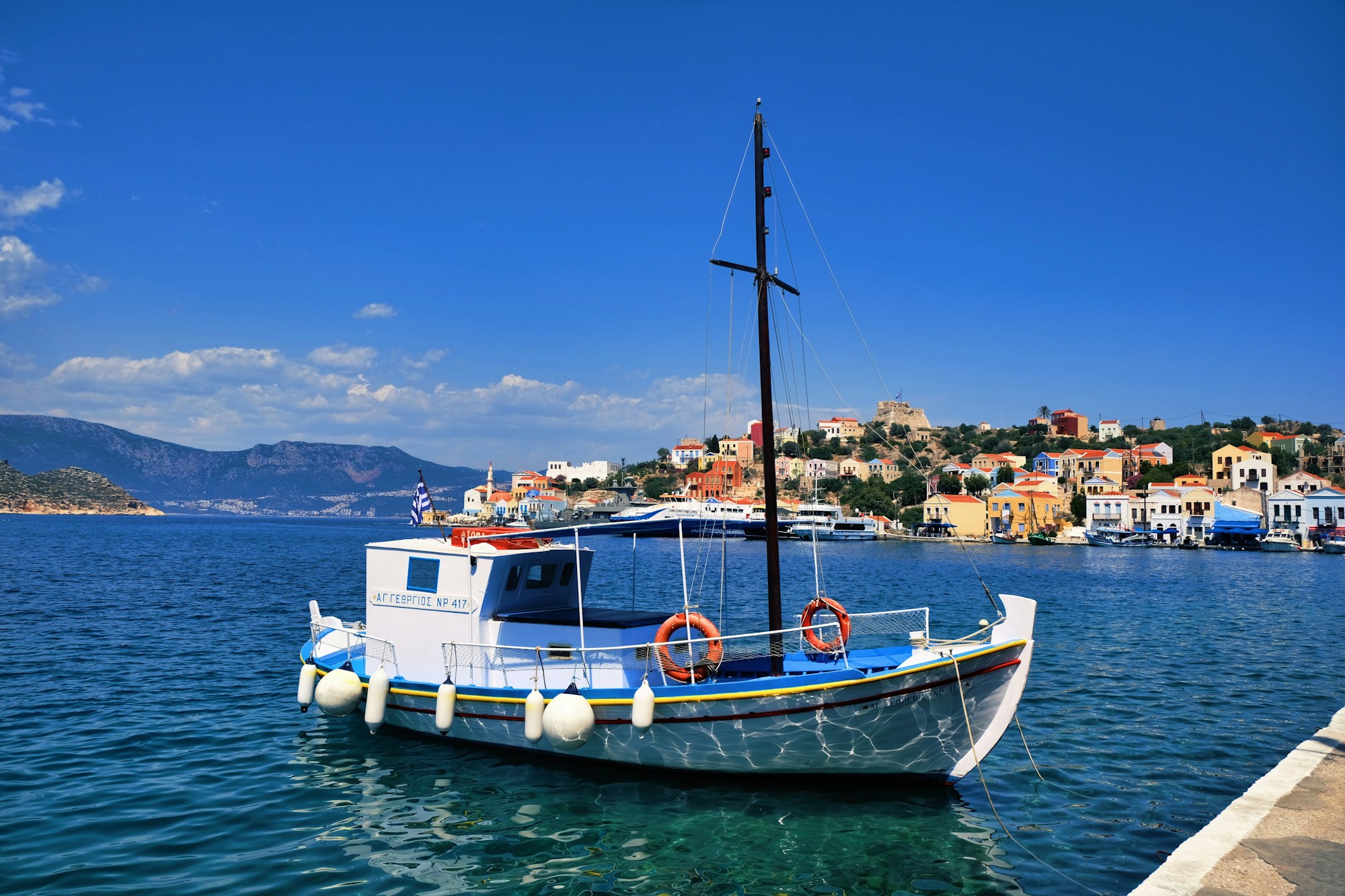Kastellorizo: Local History, Customs, Festivals & Traditions Guide
Discover Kastellorizo's rich history, vibrant customs, and unique festivals in our comprehensive local guide.

Welcome to Kastellorizo
Kastellorizo, also known as Megisti, is the easternmost Greek island located in the southeastern Mediterranean Sea. Just a few kilometers away from the Turkish coast, this small yet captivating island offers a rich tapestry of history, culture, traditions, and festivals that will enthrall visitors. This travel guide aims to provide a comprehensive look into the local life of Kastellorizo.
Historical Context
Kastellorizo has a long and tumultuous history. Its strategic location has made it a coveted prize for various empires throughout the centuries.
Ancient History
Archaeological evidence suggests that the island was inhabited as early as the Neolithic period. During antiquity, it was known as Megisti, which means "biggest," and was a part of the Dorian Hexapolis, a confederation of six Dorian cities.
Medieval Era
In the 14th century, the Knights of St. John arrived and built the impressive castle that gives the island its name. The Castle of the Knights or Castello Rosso remains a prominent landmark today. This period saw significant development, including the construction of beautiful religious edifices.
Modern Era
Kastellorizo changed hands multiple times during the modern era, from the Ottoman Empire to the Italians and briefly the British, before finally being integrated into Greece in 1948. The population peaked in the early 20th century but has since declined due to economic migrations.
Local Customs
Understanding the local customs can greatly enhance your visit to Kastellorizo.
Greeting Etiquette
Locals are warm and welcoming. It is customary to greet people with a friendly "Kalimera" (Good morning) or "Kalispera" (Good evening).
Religious Practices
The island is predominantly Greek Orthodox, and religious traditions play an important role in daily life. Church attendance is high, and religious festivals are celebrated with great enthusiasm.
Dining Traditions
Meals are a communal affair. Traditional dishes such as "saganaki" (fried cheese), "moussaka" (layered eggplant casserole), and "kleftiko" (slow-cooked lamb) are must-tries. Also, don't miss the local specialty "katoumari," a type of sweet pastry.
Festivals
Festivals are a vital part of Kastellorizo's cultural fabric, offering an authentic glimpse into the island's rich traditions.
Easter Celebrations
Easter is the most significant festival in Kastellorizo. It begins with a midnight church service followed by fireworks and a feast. The entire island is decorated, and the atmosphere is electric.
St. George’s Day
The feast of St. George, the island's patron saint, is celebrated with a grand church service and a procession. Traditional music, dancing, and food make this festival a vibrant event.
Cultural Festival
Held in August, this festival showcases local arts, crafts, and performances. It includes music concerts, theater performances, and art exhibitions, celebrating the island's rich cultural heritage.
Local Anecdotes
Every place has its stories, and Kastellorizo is no exception.
The Legend of the Blue Grotto
The Blue Grotto is a famous sea cave on the island. According to local legend, the cave was once inhabited by sea nymphs who would lure sailors with their enchanting voices. Today, it’s one of the island's main attractions, known for its mesmerizing blue light.
The Ghost Ship
A tale often told by older residents is about a mysterious ghost ship that appears near the island on foggy nights. It is said to be an Ottoman vessel doomed to sail forever.
Interesting Facts
- Kastellorizo is the smallest of the Dodecanese islands but has a rich historical significance.
- The island has been featured in several movies, including the Oscar-winning Italian film "Mediterraneo."
- Despite its size, Kastellorizo boasts a rich biodiversity, with several endemic species of plants and animals.
- The island's architecture is a blend of Greek, Ottoman, and Italian influences.
Getting Around
The island is small and easily walkable. To explore further, you can rent a scooter or even take a boat tour around the island.
Accommodation
Kastellorizo offers a range of accommodation options, from luxurious hotels to quaint guesthouses. Popular choices include:
- Megisti Hotel
- Poseidon Apartments
- Maria’s Guesthouse
Conclusion
Kastellorizo may be small, but it's brimming with history, culture, and natural beauty. Whether you're exploring its ancient ruins or taking part in its vibrant festivals, the island offers an unforgettable experience. So pack your bags and get ready to delve into the captivating world of Kastellorizo.
